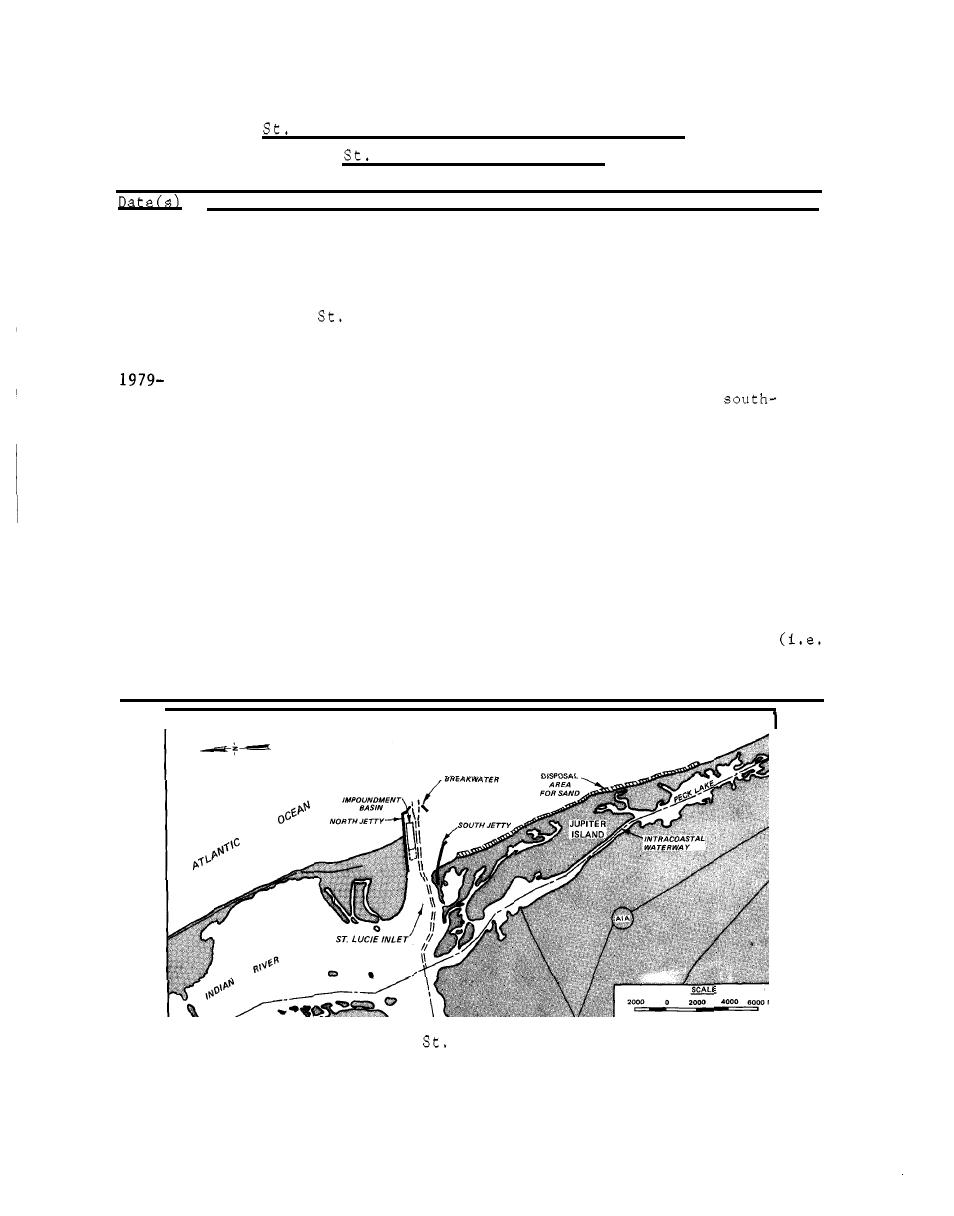
Table 1 9
Lucie Inlet Jetties and Detached Breakwater
Lucie Inlet, Florida, SAJ
Construction and Rehabilitation History
Local interests constructed the north jetty out of coquina rock to a
1926-
length of 3,325 ft. The maximum dimension of the rock was 6 to 7 ft
1929
with a density of about 120 pcf. The offshore 100- to 200-ft por-
tion of the jetty was partly covered with granite blocks. At the
same time, a channel 18 ft deep and 150 ft wide was dredged through
Lucie Inlet was created in 1892 by local residents
the inlet.
desiring a connecting channel between the Indian River and the
Atlantic Ocean.
jetty 650 ft (350 ft south-southeasterly and then 300 ft
1980
easterly), construction of a 1,600-ft south jetty with fishing walk-
way and a connecting rock bulkhead, and construction of a 400-ft
detached breakwater directly south of the north jetty extension
(700 ft apart at their outer ends).
Capstone was to be 6 to 10 tons
(at least 75 percent to be 8 tons or more), except on the outer ends
of the jetties and the detached breakwater, where the capstone would
weigh 10 to 12 tons. Estimated quantities for completion of the
improvements were 64,800 tons of capstone, 8,000 tons of core stone,
and 28,600 tons of foundation stone. The fishing walkway was built
using asphaltic concrete cap and grouting mixes. During construc-
tion there was a severe problem with scour, and large apron blankets
had to be added (no details on apron or jetty cross sections).
Although structurally sound, it is functionally unsatisfactory
1985
maintaining the required channel depth), and a major rehabilitation
is in the planning states.
I
Figure 32.
Lucie Inlet, Florida
58



 Previous Page
Previous Page
